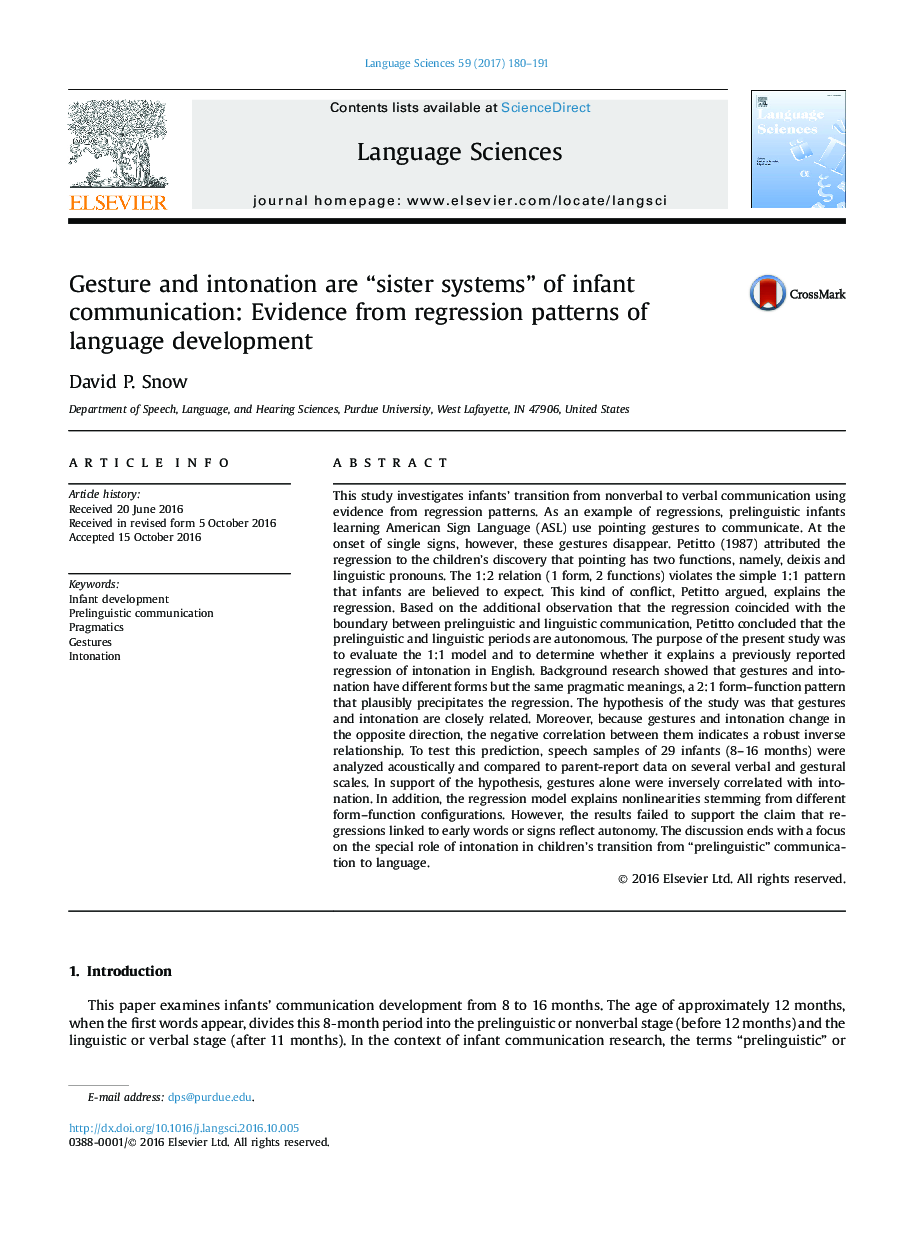| Article ID | Journal | Published Year | Pages | File Type |
|---|---|---|---|---|
| 7533903 | Language Sciences | 2017 | 12 Pages |
Abstract
This study investigates infants' transition from nonverbal to verbal communication using evidence from regression patterns. As an example of regressions, prelinguistic infants learning American Sign Language (ASL) use pointing gestures to communicate. At the onset of single signs, however, these gestures disappear. Petitto (1987) attributed the regression to the children's discovery that pointing has two functions, namely, deixis and linguistic pronouns. The 1:2 relation (1 form, 2 functions) violates the simple 1:1 pattern that infants are believed to expect. This kind of conflict, Petitto argued, explains the regression. Based on the additional observation that the regression coincided with the boundary between prelinguistic and linguistic communication, Petitto concluded that the prelinguistic and linguistic periods are autonomous. The purpose of the present study was to evaluate the 1:1 model and to determine whether it explains a previously reported regression of intonation in English. Background research showed that gestures and intonation have different forms but the same pragmatic meanings, a 2:1 form-function pattern that plausibly precipitates the regression. The hypothesis of the study was that gestures and intonation are closely related. Moreover, because gestures and intonation change in the opposite direction, the negative correlation between them indicates a robust inverse relationship. To test this prediction, speech samples of 29 infants (8-16 months) were analyzed acoustically and compared to parent-report data on several verbal and gestural scales. In support of the hypothesis, gestures alone were inversely correlated with intonation. In addition, the regression model explains nonlinearities stemming from different form-function configurations. However, the results failed to support the claim that regressions linked to early words or signs reflect autonomy. The discussion ends with a focus on the special role of intonation in children's transition from “prelinguistic” communication to language.
Related Topics
Social Sciences and Humanities
Arts and Humanities
Language and Linguistics
Authors
David P. Snow,
